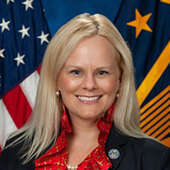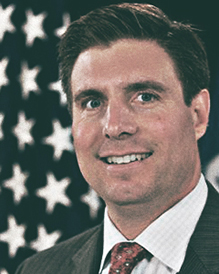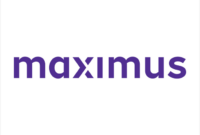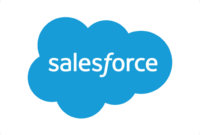Speakers
6 speakers
Date & Time
On Demand
Webinar
Duration: 1 hour
Cost: No Fee
December was the one year anniversary of President Joe Biden’s executive order instructing agencies to make public facing services easier to access and more effectively.
April will be the one year anniversary of the Office of Management and Budget’s memo telling agencies to relook at how they are applying the Paperwork Reduction Act and figure out how they can reduce the burden on citizens.
And this past August, three agencies received the first tranche of the $100 million OMB and the General Services Administration set aside from the Technology Modernization Fund for specific customer experience projects.
All being told, agencies are putting the pieces in place to improve their digital front doors.
The latest data from OMB on Performance.gov, through Sept. 30, shows 24 of 35 high impact service providers are collecting feedback and 10 more were scheduled to begin in the first quarter of fiscal 2023.
Email remains the most active way to gather feedback with phone a close second. Web and mobile remains far behind.
The feedback for the fourth quarter measuring customer experience remains mostly good with overall satisfaction a 4.45 out of 5 and confidence and trust a 4.07 out of 5.
In fact out of seven measures, five were up last quarter.
All of this data demonstrates just how much progress agencies are making and where many still need to go.
“I think that the level at which these conversations are happening is really inspiring. Obviously, the President’s Management Council, which are the chief operating officers, the number two or the number one at some agencies, have had multiple meetings on customer experience where they’ve had to select the life experiences that we’ve worked on. There’s changes that are big like that,” said Amira Boland, the federal customer experience lead for OMB. “But then there’s also seemingly small changes that are actually huge victories, like just two weeks ago, we shared all of the discovery work from the five cross agency life experiences work and shared, pretty detailed journey maps that were pretty honest and had quotes directly from the more than 500 people that we’ve talked to across the country across all the different life experiences, which was really uncomfortable for people. But the fact that we’ve shared that, been honest and really transparent about the way in which we’ve done the work and are really articulating the pain points that the American public has these services, that’s huge for us. So that was really exciting.”
Data to insights to action
Each agency is trying to address their individual pain points a bit differently, but with the same end goal in mind – serving citizens in a secure and simpler way.
At the Veterans Affairs Department, the journey to improve customer experience has been at the forefront since 2015.
Barbara Morton, the deputy chief veterans experience officer for VA, said her office is using human centered design and real time surveys, and then taking that data and translating those insights and into tangible action.
Over the last year, VA teamed with the departments of Defense, Labor, Housing and Urban Development and others to address long-standing challenges for servicemembers transitioning out of the military, which historical research shows it’s a difficult time for them
“Together with different siblings across agencies, we are bringing in subject matter expertise to talk to veterans, transitioning servicemembers and their families, and really understand what are those moments that matter most to them? What are their pain points in transition?” Morton said. “We are then bringing in the expertise from our siblings across these different agencies to make sure that we can have a full picture of what that journey looks like. Human centered design is really foundational to all the work that we do here at VA and certainly for this larger governmentwide movement as well.”
Omni-channel and digital strategies
The move toward human centered design and data to better understand an organization’s customers is part of this maturation process over the last few years.
MaryAnn Monroe, the senior director for engagement center solutions and services at Maximus, said her agency clients are engaging with their customers at a much deeper level than ever before.
“We’ve been building CX expert teams in each of our programs. We did extensive training over the last year and really focused on our high impact service providers, but didn’t exclude our other programs and digital services that we provide,” Monroe said. “To drive our digital strategies, we’ve also really been able to implement an omni-channel strategy in some of our programs directly in response to the pandemic, with Centers for Disease Control and Prevention (CDC) in particular, which we’re particularly proud of, because that was important in ensuring that we met the needs of all people. We were able to provide equitable services for people who may not have the resources to get to their local pharmacy for a COVID vaccine or a test kit. We’ve been able to implement some innovative technologies to reach them through chat, WhatsApp and other platforms.”
Many agencies still struggle to serve citizens and customer through that omni-channel approach, but agencies like the Transportation Security Administration, for instance, are moving in that direction.
Niki French, the customer service branch manager for TSA, said by focusing on training transportation security officers, federal security directors and others to understand why focusing on customer experience also means better security for the airport.
She said about 7,000 new hires have gone through TSA’s dedicated course called CX demystified and now they are going to create a “201” class to advance TSOs and others’ understanding of customer experience.
“I think about moving forward with the next generation of data where we integrate customer experience data and operational data. I think traditionally, in government, we’re we’ve been very focused on the widgets we produced and not in a bad way they’re important widgets. But how do you thread that together and marry it with the customer experience data have that fully holistic picture?” French said. “I think that’s kind of the direction that we are going and really will enable us to sort of weaponize the data in the best of ways to respond not only to operational shortfalls, but also to the experience moments that matter most to those that we serve.”
User research leads to design thinking
French added that same data can help TSA improve their recruitment and retention of employees because they will have a better understanding of the workers face in their jobs.
Unlike most other agencies, the Consumer Financial Protection Bureau (CFPB) has had the benefit of starting out with a customer focused mentality. CFPB, which Congress created in July 2010, has had an in-house design and development team from the beginning.
Chris Chilbert, the chief information officer for the CFPB, said a user research and design thinking team really leads the way to educate people within the rest of the technology team on these principles.
“They also work very closely with our business units to make sure as we do our work in putting out policies and creating information for the public that we are considering the needs of the consumer and putting them to the consumer out front,” he said. “We’ve also invested in some tools to allow us to scale our user research. We use a thing called user zoom-in allows us to do even more user research. Finally, we’ve shifted the organization of the team a little bit toward a product model. We’ve focused on the products that we’ve that we’ve built on our website, and how do we make those more accessible to the people that are using those?”
CFBP’s integration of CX and technology is part of the how agencies can mature in their delivery of better and more efficient services.
Mia Jordan, a digital transformation executive at Salesforce and CIO at Federal Student Aid in the Education Department, said CX can’t live outside of the IT organization and it has to be a pillar by which all technology products are delivered.
“We really kind of look at customer experience across what I would call three main pillars, which are customer, your external customer; your employees because you cannot forget that they are the ones that are delivering services; and customer experience does not stop at a website. There’s a new term that I’ve heard recently, which is total experience. That is customers, your partners and your employees really kind of thinking about all of those engagements,” Jordan said. “When you build these new experiences, new applications for your customers to use, you’re automatically building something that is mobile enabled, but also the opportunity to really transform the underlying business processes. We can’t forget that a lot of the pain points in customer experience is the way in which the business operates. So we have to have some patience, but also a lot of attention to the business process and maybe less so on the tech because the tech is there.”
Learning objectives:
- Current state of CX in government
- Creation of the digital front door
- Data-driven decision making
Complimentary Registration
Please register using the form on this page or call (202) 895-5023.
Speakers

Barbara Morton
Deputy Chief Veterans Experience Officer
Department of Veterans Affairs

Chris Chilbert
Chief Information Officer
Consumer Financial Protection Bureau

Niki French
Customer Service Branch Manager
Transportation Security Administration

Amira Boland
Federal Customer Experience Lead
Office of Management and Budget

MaryAnn Monroe
Senior Director, Total Experience Solutions and Services
Maximus

Mia Jordan
Digital Transformation Executive
Salesforce
Sponsors


Please register using the form on this page.
Have questions or need help? Visit our Q&A page for answers to common questions or to reach a member of our team.
